Interrogating boundaries: Hybrid practices in MFA Design
Five examples of how collaborative, multidisciplinary design can unlock new possibilities in unlikely places.
MFA Design at CCA is home to practitioners from graphic, industrial, and interaction design, but the program is not three tracks running parallel. It is a collaborative setting where the disciplines are in constant conversation, and, as Assistant Chair Sara Dean describes, “It is often the friction points between areas that end up being important and valuable.”
When Jon Sueda became the program’s chair in 2014, key to his vision was developing a synergistic interaction between the disciplines. Most studio courses are team-taught by practitioners from separate disciplines, a concept that was hard to imagine in previous decades. “Over time,” he says, “we’ve been able to bring in faculty who teach and demonstrate this kind of approach in their own work.” Students are encouraged to delve into intersectionality, hybridity, and reconfiguration.
This is not advocacy for generalism. Sueda emphasizes that the program is not combining or dissolving disciplines. “There’s a boundary there,” Sueda says, “and exciting work can come out of intentionally working with it.” Students either enter with a clear discipline (two-year program) or they have a year to establish the hard skills and formal language of that discipline (three-year program). As Dean explains, “A discipline grounds you; gives you a vantage point. You don’t eliminate your background, you own it more deeply by interrogating its boundaries. We teach students to speak the language of their discipline, but work at the edge of it.”
Following, we look at work by faculty, students, and alumni to demonstrate this vision in practice.
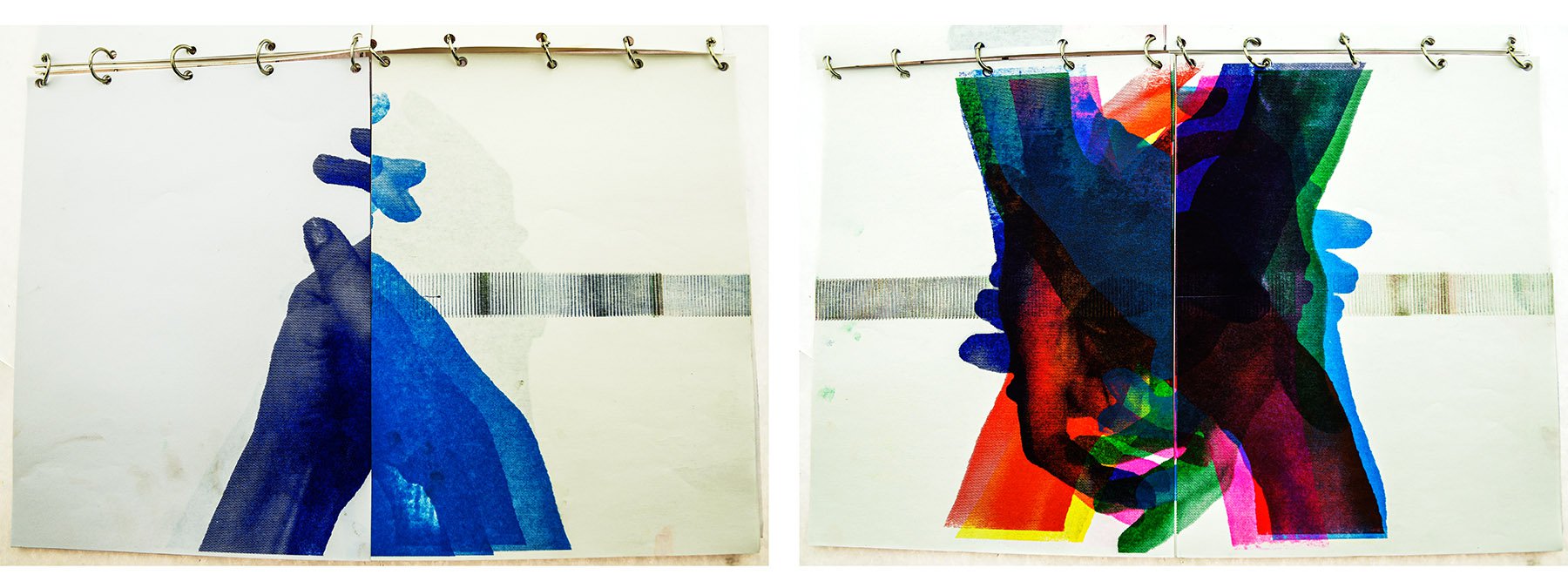
Ashlyn Jackson, Riso Knuckles, 2020. An interactive book allowing the viewer to make their own combination of hand gestures.
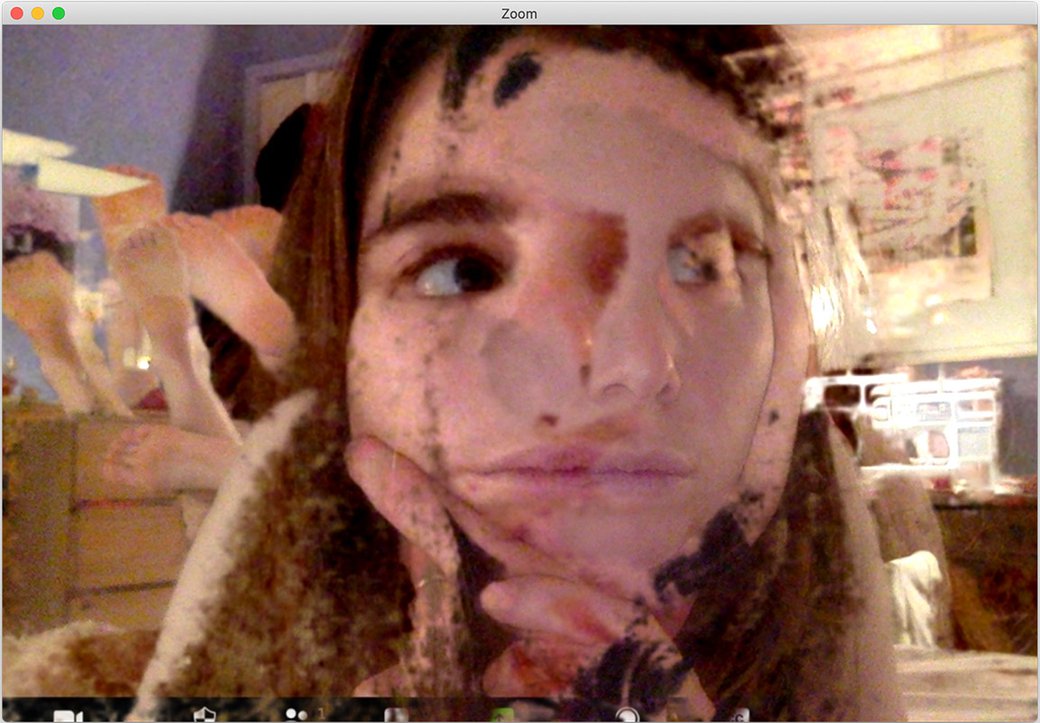
Abigayle Cosinuke, ZoomID: 0417242020, 2020. “This self portrait is from a series created entirely on Zoom. “As days layered on themselves, I layered myself on myself, exploring the unknown aesthetic ability of a platform we suddenly relied so heavily upon.”
Graduate studio course: Wild Hybrids
To see hybridity woven into pedagogy we can look to Wild Hybrids. This graduate course taught by Associate Professor Paul Montgomery grew out of a conversation in which Dean and Montgomery envisioned a course centered around how you work, as opposed to what you make. It is a ramp-up to thesis, a chance to develop independent strategies, and the hybridity is less about two disciplines joining than it is about developing methods of inquiry that transcend disciplinary-specific concerns. “It’s really about discovery more than problem-solving,” Montgomery says.
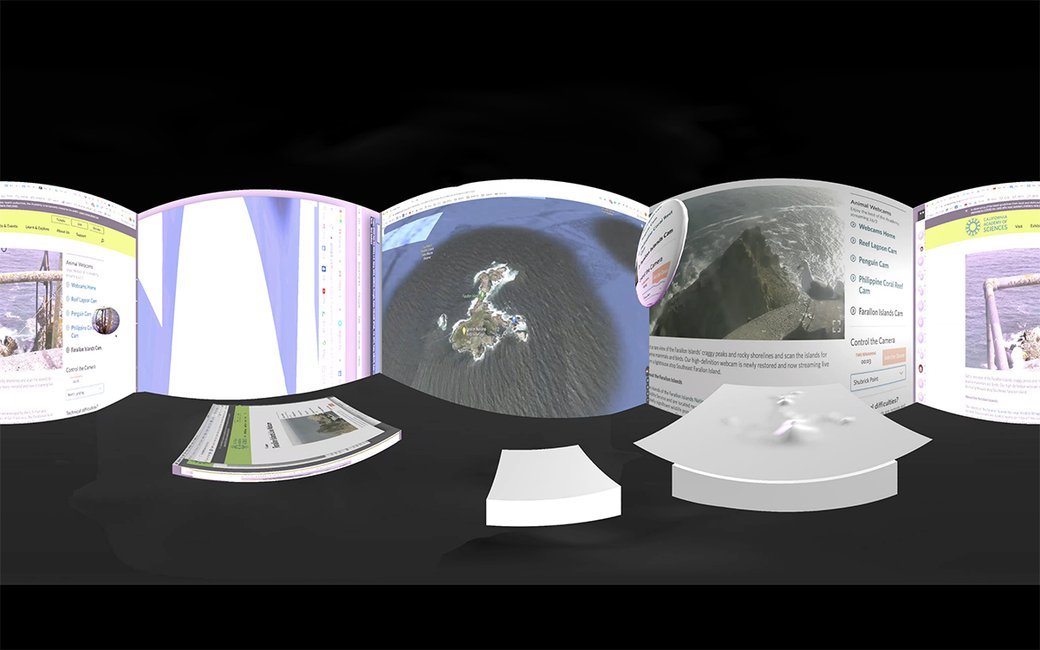
Troy Taylor, Farallon Island Site Walk, 2020. Landscape photography gathered during a hike through the Farallon Islands (30 miles off the coast of San Francisco), via live webcams and offshore computer screens.
The first half of the course is a structured series of specific but open-ended exercises that investigate daily routines, urban players, and boundaries or edge conditions. In the second half, students develop interactions, tools, or objects from those exercises. Below we see some student projects from Wild Hybrids 2020, taught by Montgomery and Dean. In 2021, design researcher Jiwon Jun will co-teach with Montgomery.
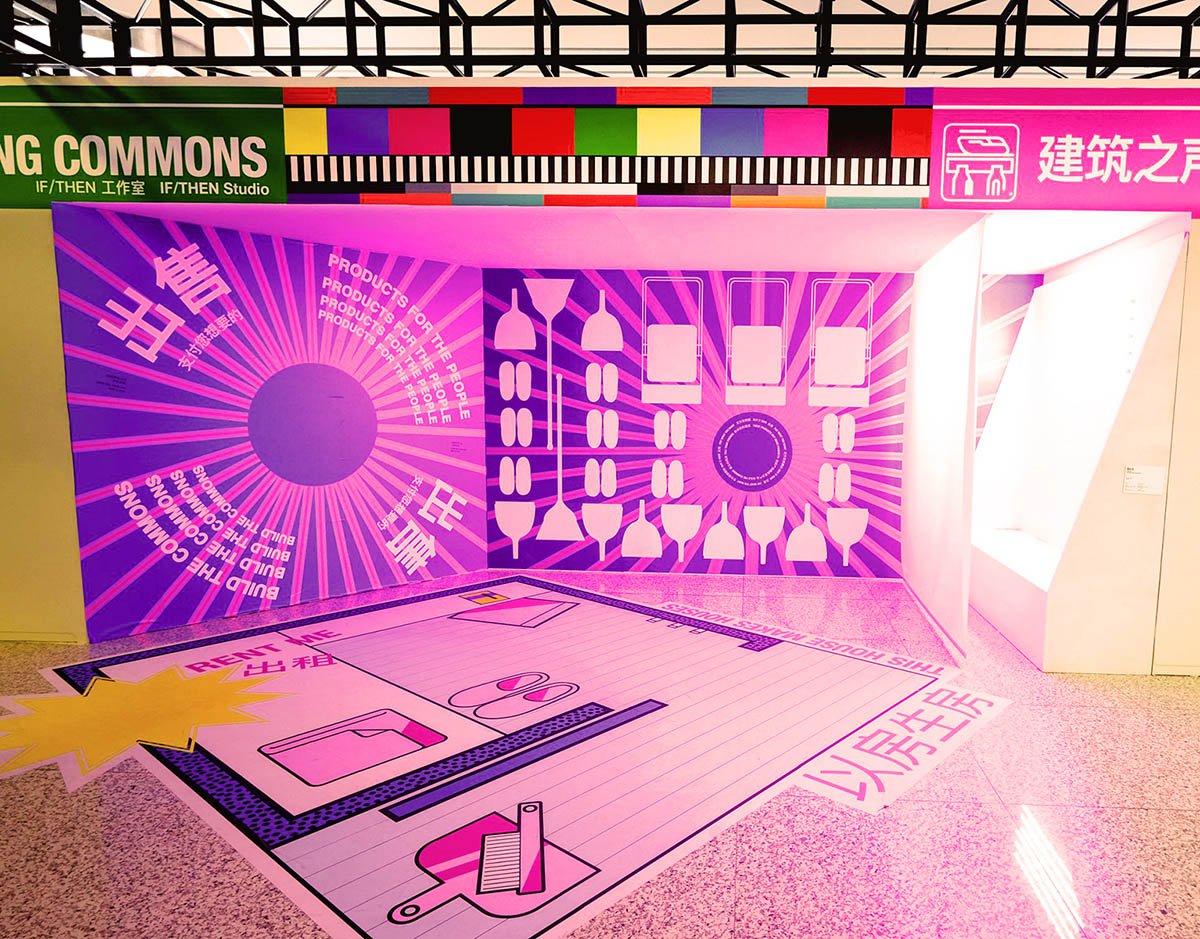
IF/THEN, Constructing Common, Shenzhen Biennale 2020. Photo courtesy Shenzhen Biennale of Urbanism\Architecture.
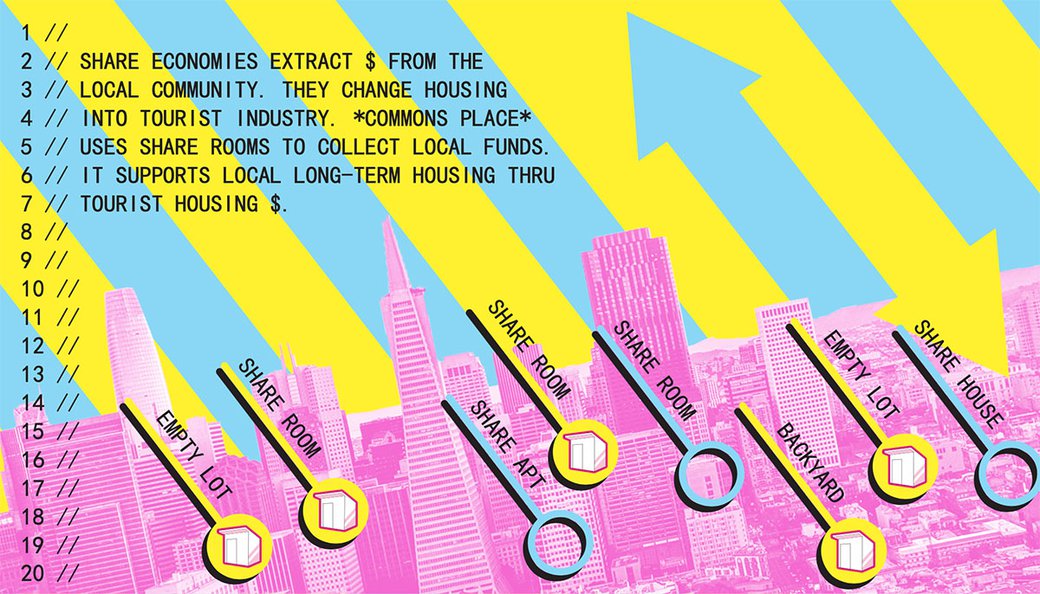
IF/THEN’s Constructing Common project, shown at the Shenzhen Biennale, is where pop-up small scale housing meets the needs of short-term residents, and the income from those spaces feeds into long-term community needs. The project asks, “Instead of using tourist housing to extract housing units and money from a neighborhood, how could we use those types of structures to build common funds in a neighborhood?”
Hybridized design in faculty practice: IF/THEN
IF/THEN is a collective space in Berkeley—founded by Dean, faculty members Cristina Gaitán (MFA Design 2015) and Rafi Ajl (MFA Design 2015), and Rachel Weidinger (MFA Fine Arts, Social Practice 2017). Each member has their own practice, but they come together at IF/THEN to engage questions of public space and urban interaction through tools of design. “Everything starts with a conversation,” Dean says. “My background is in architecture and urban scale interactions, Cristina’s in landscape and interaction design, Rachel’s in social practice, and Rafi’s in industrial design and furniture. And the people we bring in come from other backgrounds as well. This diversity of perspectives allows us to find possibilities in unlikely places.”
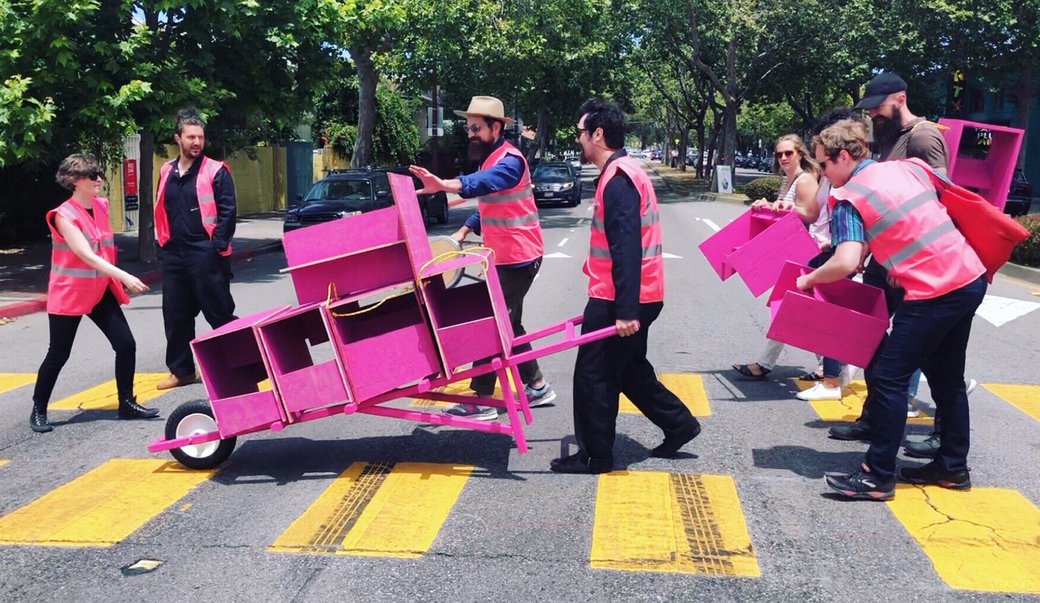
IF/THEN, San Pablo Avenue Ramble, 2019.
Summer 2019's San Pablo Avenue Ramble was an event in a series of engagements with San Pablo Avenue Corridor, a thruway and important community space experiencing rapid change. The Ramble is a collaboration between Berg collective, Annika Bastacky, Miguel Novelo, and IF/THEN. The group archived video history of the area and more than 200 narratives of local stakeholders; shared that collection on screens in local businesses; and spent a day walking the strip, bringing their own furniture, and holding conversations on-site about the future and past of the space and who might control the trajectory of change.
“An interdisciplinary project is one that you couldn’t do alone,” Dean says. “You need other voices, perspectives, and tool sets. It’s not about finding the middle, it’s about finding all the different ways that a question can play out. You all have agency and voice and feel able to take action, and that’s exciting and energizing.”
All of this informs the way they work with students. “It’s the reason I attended our program, why I love our program,” Gaitán says. “It’s about being a designer with a range of tools, more than about a specific discipline.”
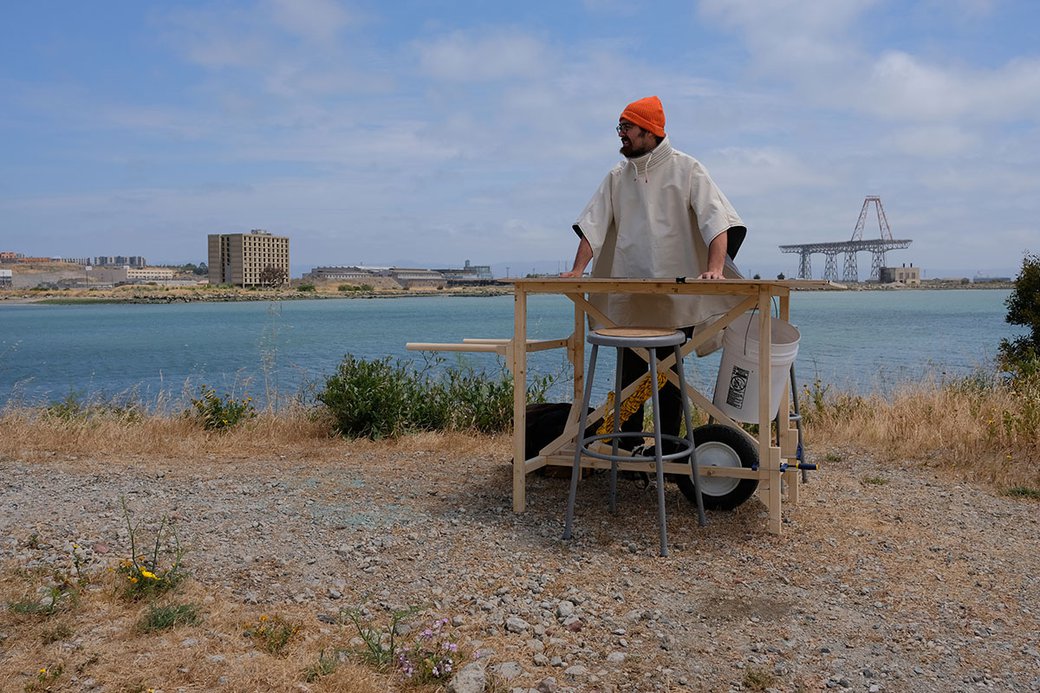
Berg., Barge, 2018. Photo by Benner Boswell.
Barge is a mobile studio, built in response to the cost of space in the city. It allows Berg. to bring their practice anywhere, redefining the city as their own space to work in. Deploying the mobile studio creates a context that prompts further design probes, building upon and drawing from the experience of working in public.
MFA Design alumni collective: Berg.
Benner Boswell and Alexander Kozachek, both 2019 graduates of MFA Design, formed the collective Berg. while still attending the program. They continue to work together and support each other’s individual projects. They build critical objects about space, time, and elements (like wind), including creating sets for public events. “We specialize in using minimum ingredients and getting maximum output,” says Kozachek, who adds that the benefits of their collaboration are multifold. “We get someone to suspend disbelief with, a shared language and accountability.”
Boswell and Kozachek were players in the San Pablo Ramble and joined Futurefarmers as part of the Out of Place, In Place exhibit at YBCA in 2018, a collection of discursive events and objects at the intersection of humans and nature.
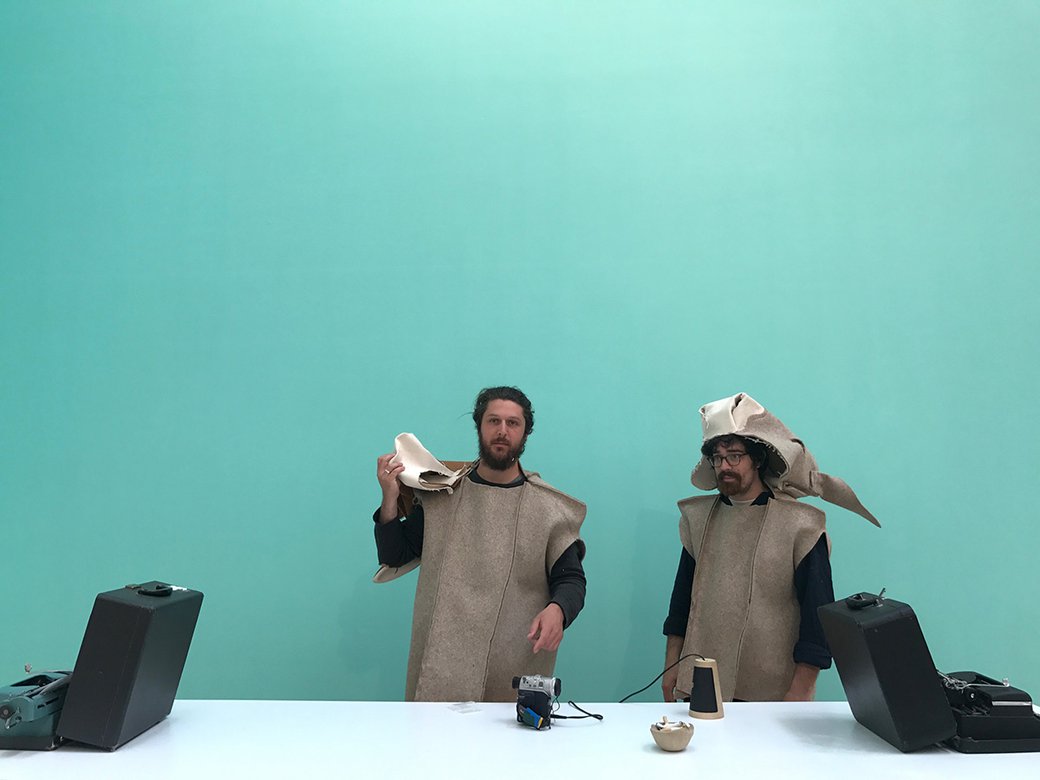
Berg. at YBCA with Futurefarmers, 2018. Photo by Futurefarmers.
Their contribution to the exhibit included spending three days a week, for 12 weeks, dressed as donkeys as symbols of resistance.
“We were industrial designers, doing performance art to learn interaction design,” Kozachek says of the experience. On multidisciplinarity Boswell notes, “There is a level of interrogation that design is really good at. Whatever tool kit makes sense is the one that we’ve gone for—whether that’s saws to make a table or InDesign to make a book. It’s these different avenues into whatever we’re looking at—be it fog or the underpinnings of how things are built. It’s tool agnostics that gives us our approach.”
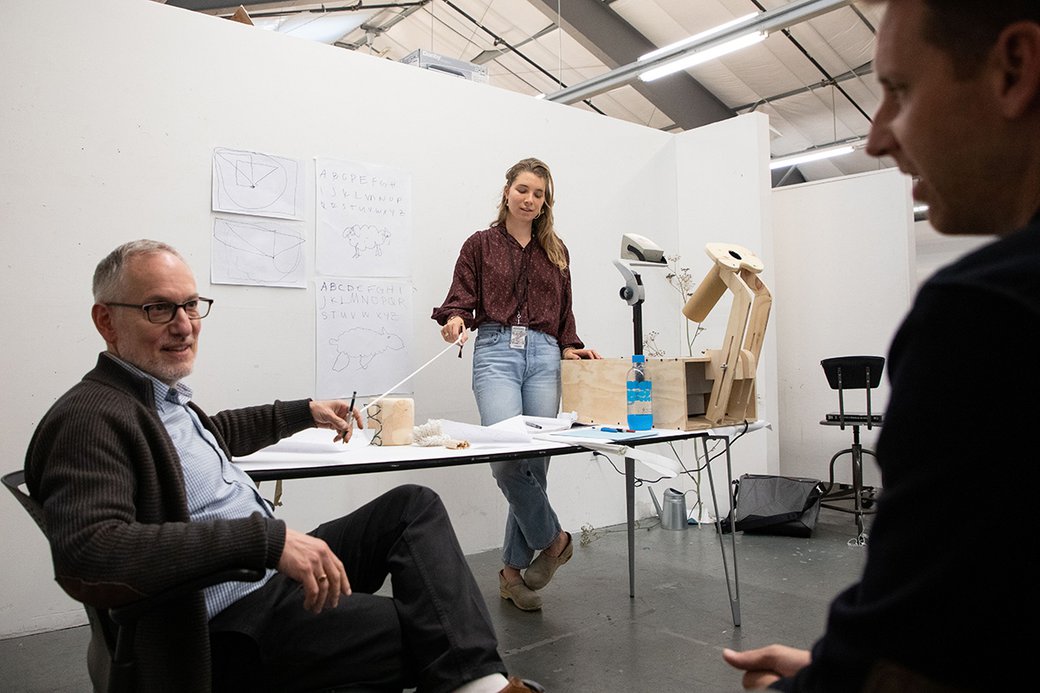
Martin Venezky and Matt Johnson teaching Drawing Machines in 2019, with student Abigayle Cosinuke. “In this class,” Venezky says, “students are mashing up found technology and studio materials to make something new, asking questions about the potential for collaboration between humans and machines. Any assumptions about boundaries and desirable outcomes are available for rewriting.” Photo by Nicholas Lea Bruno/CCA.
Transcending separate dialogues: Martin Venezky
MFA Design Professor Martin Venezky works in graphic design and photography. “I had been consciously thinking of the two as separate for a long time,” he says. “In order to get traction in photography, I had to leave design behind, to really start thinking of photography in its own frame of reference. It’s hard to do, but I think it’s an important part of understanding a discipline—its history and terminology, its way of critiquing.”
The synergistic conversation is clear in his work: photographs that are more about color and line than documentation; collages made from photographs; and extensive collections of images, exemplified in the 2018 exhibition Martin Venezky: What I Know about Photography at San Francisco State University’s DESIGNSPACE gallery. His pursuit of visual literacy transcends the separate dialogues. Recently he’s “been thinking about combining the two, developing a manifesto of logic and strategy, putting my own stake in the ground.”
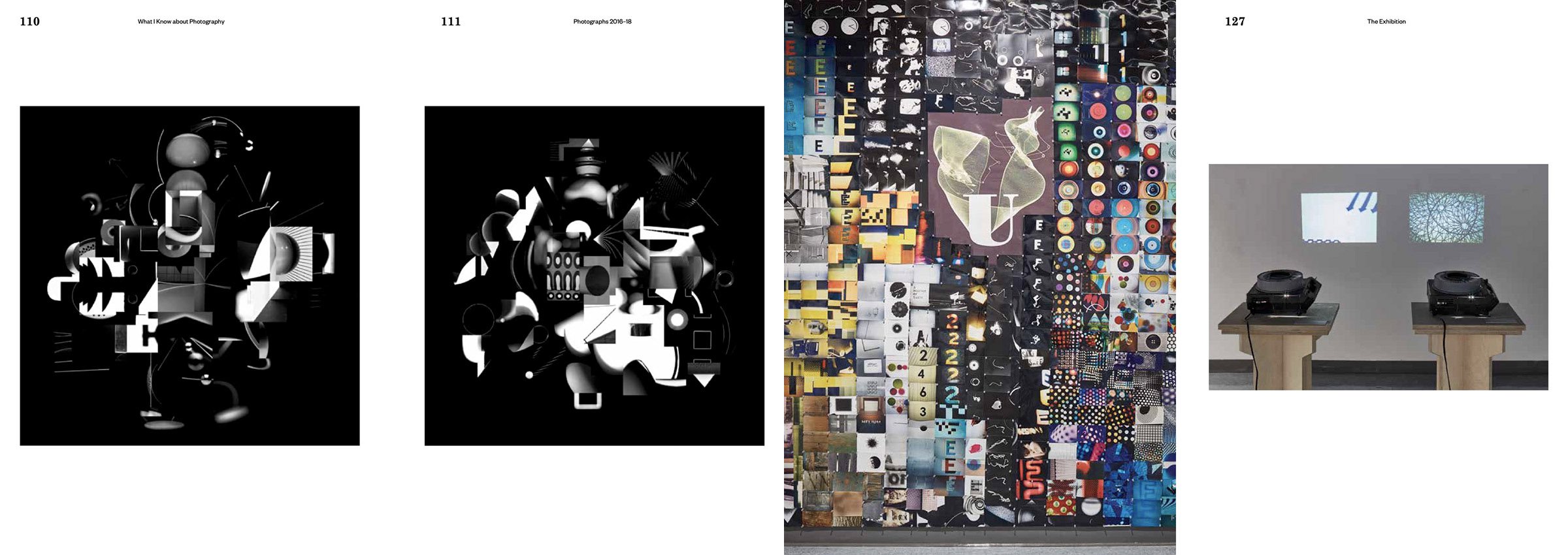
Pages from the exhibition catalog for Martin Venezky: What I know about Photography. Jon Sueda, the catalog’s designer, describes the show’s themes as “the power and sensation of images, the interstitial territory between photography and design, and the space between the pictures.”
Dual positions for critical framing: Hugo Eccles
Hugo Eccles is an industrial design assistant professor in MFA Design as well as co-founder and design director of Untitled Motorcycles (UMC). His 2020 exhibition MOTO MMXX at the Museum of Craft and Design (a detailed and rewarding virtual tour remains online) of custom motorcycles hybridizes production concerns and curation, revealing the elegance of the finished product and the undervalued investment required to advance the field.
His dual position of curator and practitioner allowed this critical framing of labor and value. The motorcycles are accompanied by detailed videos and backstories. Collectively they have a market value of $1.1 million, but if typical workshop rates were applied to the hours spent on design and construction, the value would be closer to $5.6 million.
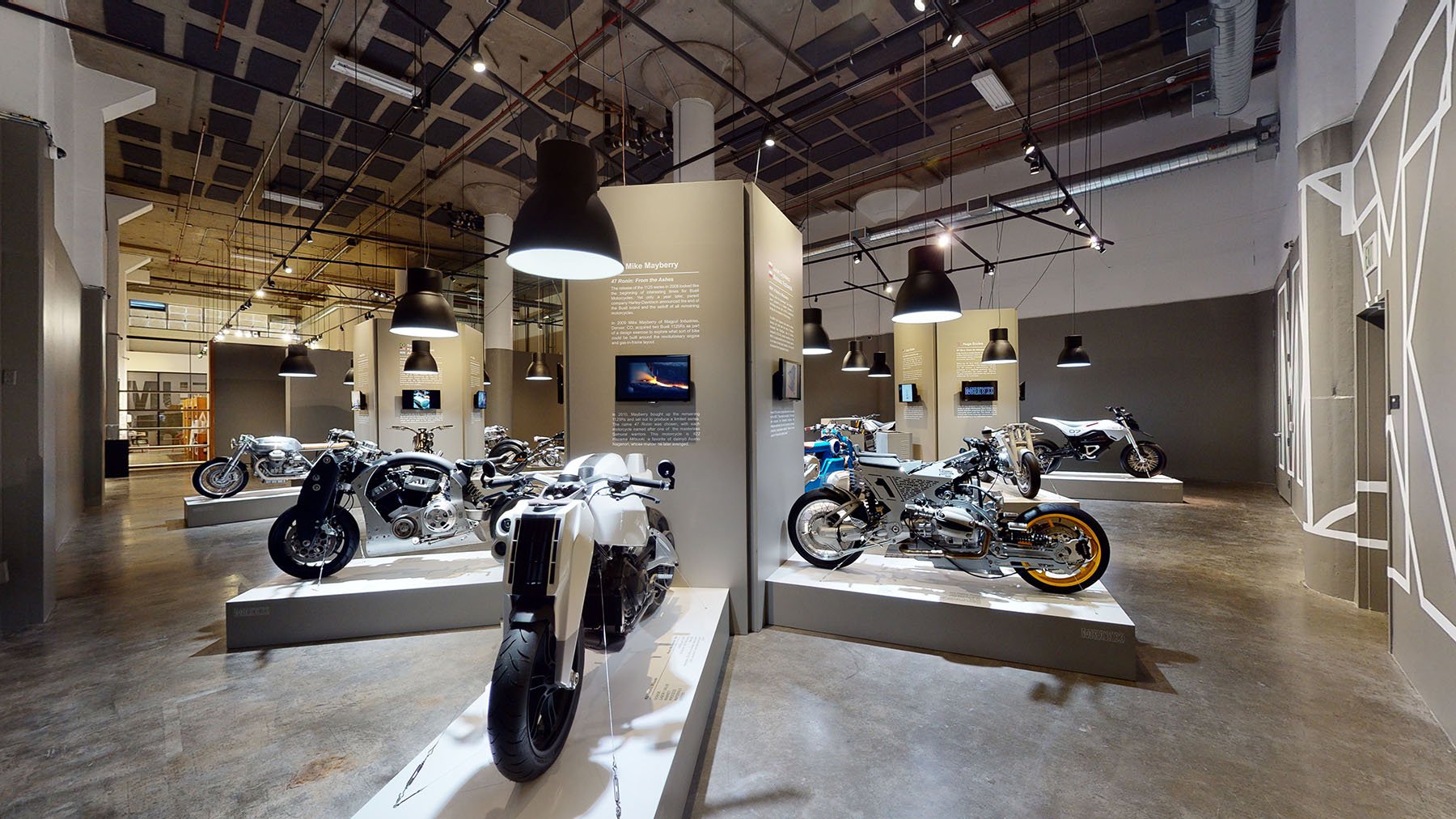
MOTO MMXX exhibition at San Francisco Museum of Craft and Design, 2020. Photo courtesy of Artland.
Productive friction by design
This is just a small sample of the work happening through CCA’s MFA Design program. There was a time when hybrid practices and co-teaching across these lines was seen as a threat to the rigor of craft. But as the MFA Design program has evolved toward a stance of supporting students to claim a space in their chosen discipline while working in the context of a more broad set of skills and tools, the work of both students and faculty has gained critical momentum. From work born of lucid cross-discipline communication, to shared language and accountability, to nimble interrogation over dogmatic delivery, this approach keeps the community—faculty, students, and graduates—in an active engagement with the friction found at the boundaries of their chosen areas.
—Saraleah Fordyce
January 25, 2021